Why is white bloom on gooseberry berries dangerous, and what to do with it
If you notice white bloom on gooseberries, take appropriate action as soon as possible. Most likely, you have encountered powdery mildew. The disease will actively progress. If you do not get rid of it, the shoots will first wither, then turn black and dry.
We make a diagnosis
Before you start treating gooseberries, you need to understand what happened to them. To do this, you must carefully examine the affected plant.
Perhaps, upon examination, you will identify the following symptoms:
- On the fruits, leaves and thin branches of the gooseberry, a white loose bloom has appeared. It looks like they were sprinkled with a thin layer of flour.
- Fruits that are covered with bloom stop growing and ripening, gradually change shape and, as a result, dry up.
- The affected shoots are bent, darken from the tops, and then die off.
- The leaves sprinkled with white powder curl up, dry up and fall off.
If you notice all of these signs, or at least some of them, then you can confidently diagnose powdery mildew. It is a fungal infection, or mold.
It poses a great danger not only for gooseberries, but also for currants and some other fruit crops. Moreover, if at first the disease covers more and more shoots on one plant, then after ripening, contact between two shoots of neighboring bushes or even a strong gust of wind is enough for the spores to spread throughout the garden. Therefore, treatment must be timely.
Causes of the disease
Powdery mildew spores can be stored in the ground for many years, easily tolerating heat, cold, drought and any other adverse external conditions.
They are activated at high humidity. If it was a rainy summer or an inexperienced summer resident overdid it with watering, then the spores wake up from a long sleep and begin to multiply actively, affecting the gooseberry fruits, and then appearing on the leaves.
Treatment with special drugs
Of course, appropriate measures must be taken immediately to heal the plant. The fastest way to help if the gooseberry is sick, special drugs sold in stores. But they will not help get rid of all mold spores. Another drawback is that strong fungicides can cause serious harm to insects that pollinate the plant (and this is a threat to the crop), and even people who will eat the fruits.
Therefore, you need to process the bushes at a certain time:
- The first treatment is before bud break, when the gooseberry resembles rather not a bush, but just a broom of thorny branches.
- The second stage is before flowering, so that chemicals do not get on the blossoming flowers. Most often, fungicidal preparations are used at this time.
- Finally, the last chance to spray the plant harmlessly is after flowering, but a month before harvest. Then the chemicals will be partially washed off by rains, partially decayed by contact with air. In any case, they will no longer cause harm.
Now let's figure out which measures to combat powdery mildew are most effective.
Copper sulfate
A tool proven by many generations of summer residents and gardeners. It goes both for preventive spraying and for treatment. If you spray the plants with a solution of copper sulfate immediately after the onset of the thaw, then the risk of powdery mildew is almost completely eliminated. If you use copper sulfate, when the gooseberries turn white, the infection will quickly subside.
To prepare a solution, it is enough to dilute 100 g of copper sulfate in a 10-liter bucket of water. Immediately after that, you can start processing. Some summer residents also dip the roots of plants in this solution before planting - for three to five minutes in order to reliably disinfect them, destroying any fungal diseases.
Topaz
Another affordable, but at the same time effective and therefore very popular drug among summer residents. Sold in ampoules, the contents of which can be diluted with 10 liters of water and sprayed on the leaves on the bushes.
Spraying for greater efficiency is done twice:
- Before flowering.
- After budding, but before fruit formation on the branches.
A serious advantage of Topaz is its stability. Even heavy rain does not wash away the film formed on the leaves and branches, which reliably protects the plant not only from powdery mildew, but also many other fungal diseases.
Important
Topaz's tenacity also has a downside. Because of it, you need to especially carefully monitor the timely use and do not hope that the chemical will quickly wash off and the sprayed berries can be eaten without harm to health.
Bordeaux liquid
The drug is sold ready-made, but it is not too difficult to make it yourself. The main advantage is efficiency and safety: you can sprinkle Bordeaux liquid on gooseberries at almost any time.
How to prepare Bordeaux liquid:
- You will need 300 g of lime and the same amount of copper sulfate.
- They are placed in different containers - glass, wood or enamel.
- After that, pour hot water, about 2-3 liters.
- A hot solution of vitriol is diluted in 5 liters of cold water.
- The lime solution is filtered, the sediment is removed, and the liquid is mixed with vitriol.
The resulting product is appreciated by many experienced gardeners: it often allows you to save gooseberries from powdery mildew.
How to process gooseberries - improvised compositions
However, it is not always possible to spray the affected bushes with chemicals. In some cases, they may simply not be at hand. In others, the disease affects the bushes during flowering or ripening of fruits. You cannot use purchased drugs at this time. But I don't want to sit around looking at how the bushes are covered with a white coating.
In such a situation, folk remedies will come to the rescue. Yes, they are less effective, but their use will not harm people. To effectively fight powdery mildew, you need to process gooseberries with prepared preparations more often than three times per season, and after each heavy rain you will have to repeat the procedure. But ecological cleanliness and safety, according to many gardeners, fully compensate for this disadvantage.
Advice
In order for folk medicines to stay on the leaves and stems longer, a little soap shavings are added to them - this increases the stickiness of the product.
Ash solution
A very good result can be achieved with a conventional ash solution. Of course, in this case you should take only pure wood ash, preferably birch, not mixed with various garbage, which is often burned in fires and stoves.
How to work with ash:
- Taking a kilogram of ash, fill it with ten liters of water.
- Let it brew well - at least a week.
- Shake the suspension immediately before use, then start spraying.
- The optimal frequency is once every two days.
- After the third or fourth spraying, the powdery mildew problem is usually completely solved.
The secret of experienced gardeners
It is useless to take special sprayers for ash suspension. You will spend more time cleaning than working. It is worth doing what they do in many villages to this day - use a broom. It is enough to dip it in a bucket and sprinkle the bush with a sharp wave. This saves time and makes it possible to work even with thick solutions.
Mullein
Cooking is simple - just mix fresh cow dung with water in a 1: 3 ratio. After that, the container with the solution is left for three days in a warm place. After this time, the infusion is filtered and used for processing.
Yes, the smell is not the most pleasant. But mullein solution is very effective against many fungal diseases, including powdery mildew. In addition, it acts as an additional feeding.
Soda
Another reliable partner in the fight against fungal disease. To get a working solution, you will need soap, soda, and water:
- Grind a small piece of laundry soap (about 50 g) on a grater and dissolve in a bucket of water.
- Add 40 g of soda to this.
- Stir the liquid and you can immediately apply it on the branches covered with white bloom.
Important
There is a limitation with soda and other odorous preparations: you cannot spray gooseberries, like other bushes, during flowering. The characteristic smell will scare away insects, and they will not pollinate the curtain, which will lead to a sharp drop in yield.
It is also not worth storing the solution for a long time: it will sour and acquire an extremely unpleasant odor. It is best to cook it in small portions and apply immediately.
Potassium permanganate
Many experienced gardeners use regular potassium manganese to control powdery mildew. 1.5 g of powder is added to 10 liters of water. It is recommended to treat the bushes with a solution weekly. Also, the gooseberry should be sprayed additionally if it rains, washing off the agent from the leaves.
Powdery mildew spreads quickly and leaves reluctantly. Therefore, the main efforts must be made to prevention: to organize competent watering and good air access. During the treatment, soil moisture should be reduced or stopped altogether. With solutions, the plant will receive water through the leaves.
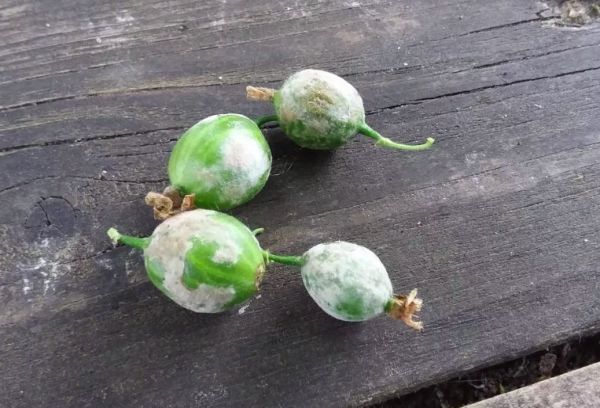
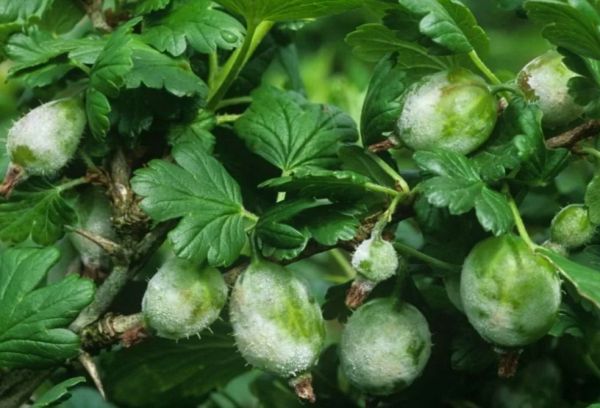
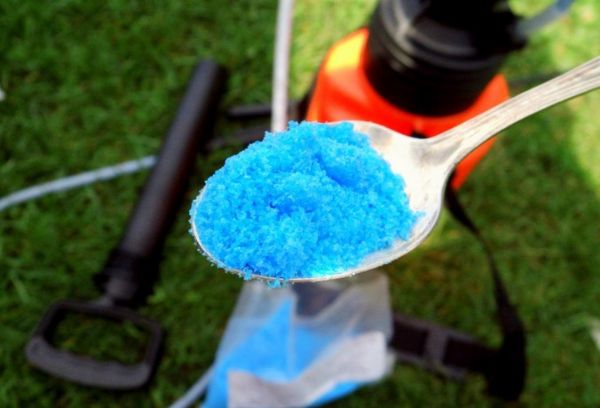

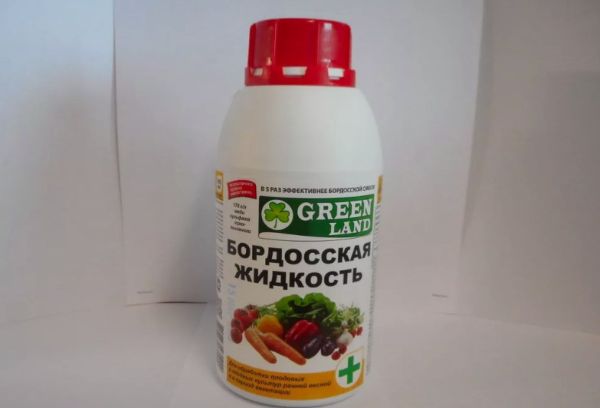
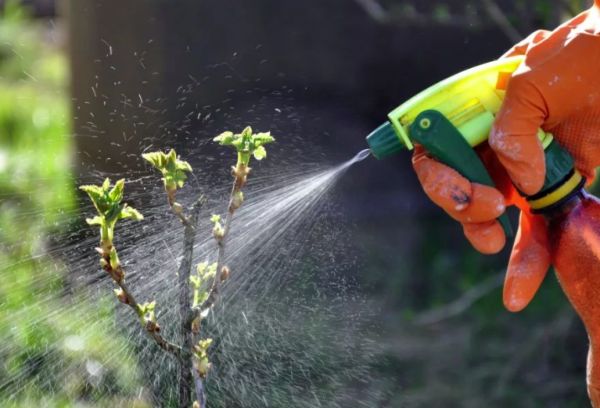
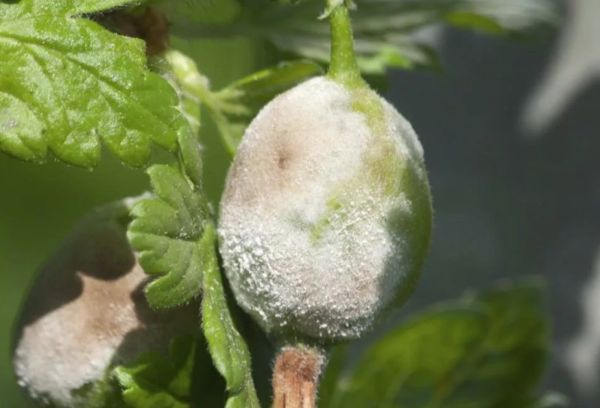

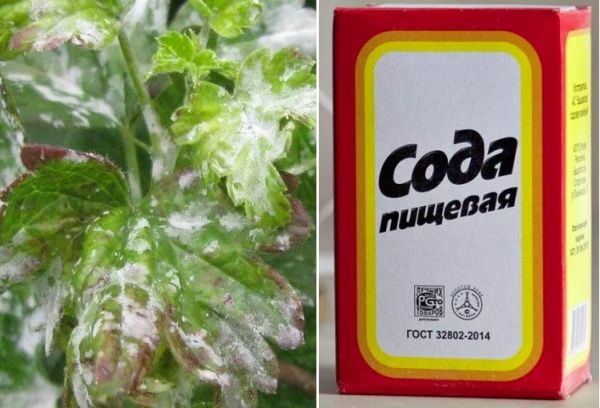
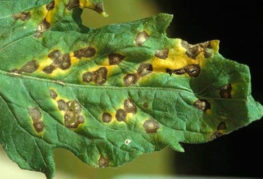
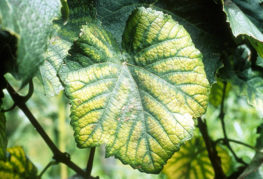
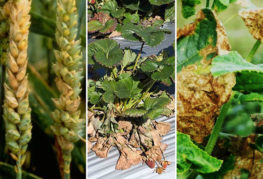
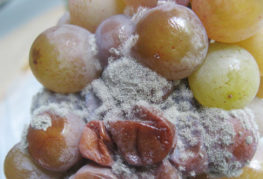
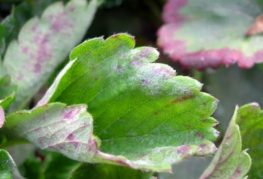
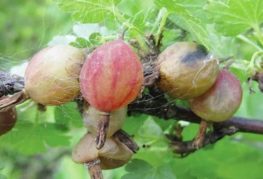
and will be published shortly.